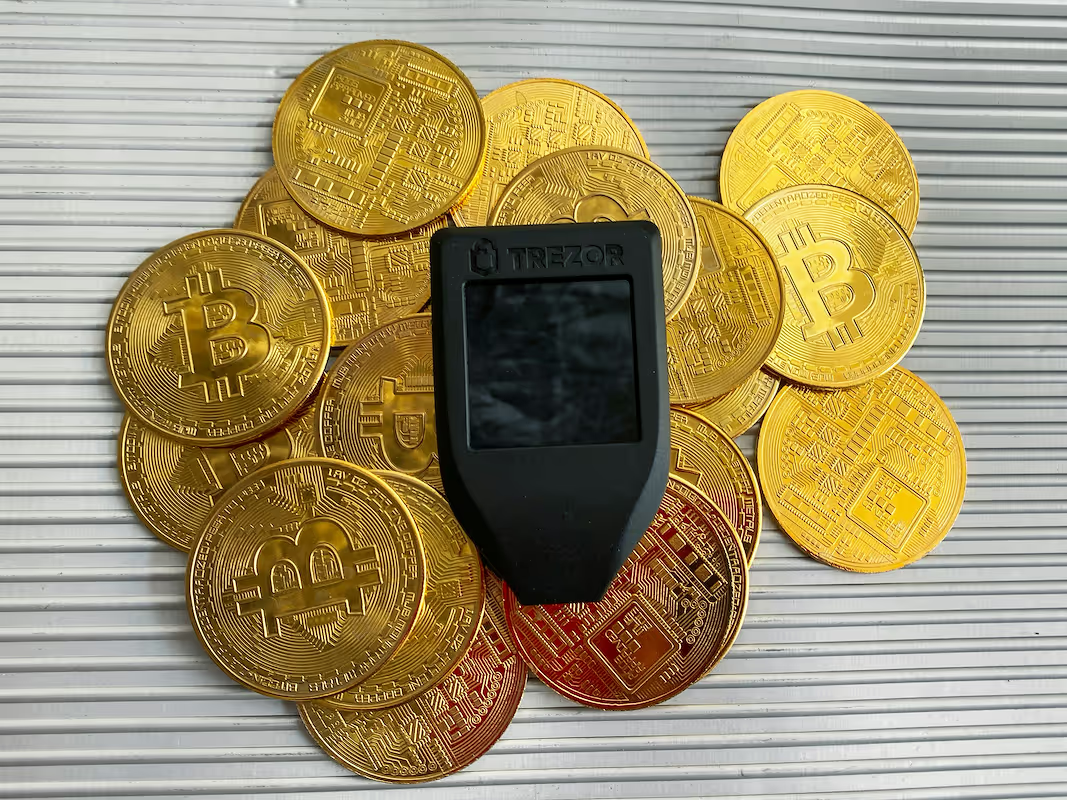Key Takeaways
- Offline Security: A hardware wallet stores your private keys offline, away from internet-connected computer vulnerabilities.
- Physical Control: It is a tangible device giving you direct ownership and control over your crypto assets.
- Secure Transactions: All transactions are signed directly on the device, keeping your keys completely isolated.
What is a Hardware Wallet?
A hardware wallet is a specialized physical device, often resembling a USB stick, designed to secure your private keys away from the internet. This "cold storage" method protects your assets from online attacks. For instance, even if a hacker gains full control of your computer, they cannot access the 5 BTC stored via your hardware wallet, as the keys never touch the compromised machine.
To authorize a payment, the transaction details are sent to the hardware wallet for verification. You confirm the amount, say 500,000 sats, and the recipient's address on the device's own screen before physically approving it. The wallet signs the transaction internally and broadcasts the signature, but your private key remains securely isolated on the device, never exposed to the network.
How Hardware Wallets Work
At its core, a hardware wallet uses a secure microcontroller to generate and protect your private keys. When you create a transaction, the unsigned data is sent from your computer to the device. You verify the transaction details on the wallet's screen and provide physical confirmation. The device then signs the transaction internally and returns only the signature, meaning your private keys never touch an internet-connected machine.
Benefits of Using a Hardware Wallet
Hardware wallets provide a superior layer of protection for your digital assets. By isolating your private keys from online threats, they offer peace of mind and direct authority over your funds. This approach fundamentally changes how you interact with and secure your cryptocurrency.
- Security: Your private keys are kept completely offline, away from computer viruses and hackers.
- Control: You have physical possession of the device that authorizes all transactions.
- Verification: A built-in screen allows you to confirm transaction details before signing.
- Immunity: The device is immune to malware that could infect your computer or phone.
- Portability: Securely access and manage your assets from any computer.
Setting Up a Hardware Wallet
Getting your hardware wallet operational is a straightforward process. Here is the standard procedure:
- Begin by unboxing your new hardware wallet and connecting it to your computer or mobile phone using the provided cable.
- The device will guide you through the initialization. Follow the prompts on its screen to generate a new, unique wallet for your assets.
- You will be presented with a recovery seed phrase, typically 12 or 24 words. This is the master key to your funds. Write it down carefully on paper and store it in a safe, private location offline. This phrase is your only backup.
- Finally, you will set a personal identification number (PIN) to protect your device from unauthorized physical access. Once your PIN is confirmed, the setup is complete, and your wallet is ready to secure your cryptocurrency.
Security Features of Hardware Wallets
Hardware wallets are built with multiple layers of defense to safeguard your assets. Their design isolates critical information and requires physical interaction for any operation, making them a fortress for your private keys.
- Secure Element: A specialized chip that protects private keys from physical and software attacks.
- PIN Protection: A user-set code that prevents unauthorized access to the device itself.
- Recovery Phrase: A mnemonic seed that allows you to restore your wallet on a new device if the original is lost or damaged.
- Physical Confirmation: Requires you to press buttons on the device to approve transactions, preventing remote hacks.
Comparing Hardware Wallets to Other Storage Methods
Hardware wallets represent a significant step up in security compared to other storage options. While software and paper wallets have their uses, they introduce different risk profiles. Understanding these distinctions is critical for safeguarding your assets effectively.
- Software Wallets: Offer great convenience for daily use but expose your private keys to online threats like malware.
- Paper Wallets: Provide offline security but are impractical for regular transactions and vulnerable to physical loss or damage.
- Hardware Wallets: Combine robust offline security with user-friendly transaction signing, though they require an initial investment.
Hardware Wallets and the Lightning Network
Integrating hardware wallets with the Lightning Network presents a unique security architecture. Your hardware wallet secures the on-chain bitcoin that opens and closes payment channels, providing a strong foundation. The frequent, off-chain transactions typical of Lightning, however, demand a different approach. This often involves a hybrid model where the hardware wallet guards the primary funds, while a connected software component manages the high-speed payments within an open channel. This structure balances robust security with network functionality.
Join The Money Grid
While your hardware wallet secures your core Bitcoin assets, you can tap into global, real-time payments through platforms like Lightspark, which is built on Bitcoin’s open foundation. Their infrastructure supports instant, low-cost Bitcoin transfers and connects you to a worldwide payments network for both digital and traditional currencies. This is how you access the full potential of your digital money, moving it as quickly and securely as information on the internet.


